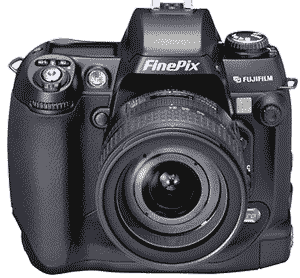
Fuji FinePix S3 UVIR

FujiFilm Direct link to UVIR info
Caution: This is NOT a forensic camera for the average or above average photographer.
| The following is my opinion, Hayden Baldwin of
Forensic Enterprises, Inc., based on a purchase of this camera
and subsequent filters. First I want to thank FujiFilm for taking
the initiative to assist law enforcement with a long over due
product. I applaud them for their initiative. BUT this is NOT a
camera for the typical CSI or Forensic Scientist. The concept is
great! The camera has the capability to record images from about
350nm to about 1000nm. Visible light is from about 400 to about 700
nm. That means we will be able to record images in the invisible
light spectrum in high UV and in the IR (Infrared) range from 700 to
1000nm. It is all speculation. No real testing has been done with the camera for crime scene work. No one knows what filters will work best and with which light frequency. No one knows, not even FUJI. They assumed law enforcement already knew this information. They don't. I would probably say that only a select few in law enforcement now had ever attempted IR photography to begin with let alone do it in a crime scene. Do not buy this camera unless you are prepared to spend a lot of time experimenting with different light sources and special (expensive) IR filters. This is really a great camera and again I repeat myself, Fuji should be applauded for making available a commercially made camera that can record images in the invisible light ranges. The camera has the "hot mirror" removed from over the sensor. With the "hot mirror", the camera can only see in the "visible light" range of about 400 to 700 nm, not quite true but close to those figures. Without the hot mirror the camera's sensor can recoded from about 350nm to 1000nm. In order to use the camera for "normal" photography a special filter has to be used to block UV and IR light. And special filters to record in the IR and UV range. A set of filters from PECA will set you back about $850+ besides the current $1795 price of the camera. And that is buying the camera at that price with no lenses! But I am sure that will change. If you remember the days of IR film photography you will have a handle on some of the filter issues but not all. IR film photography was very difficult to use. The film would fog with any heat applied (holding it in your hands), special care was required, focusing was different (the lenses back then had a IR mark on the lens to help you compensate for focusing, the lenses now do not have the marks) and you never knew if you had the correct exposure until you developed the film back at the lab. Fuji changed all that when they introduced the S3 in the UVIR version. We can now see how to manually focus with the 30 second preview they have on that camera and we can correct for exposures because we can review the image instantly! Sounds great? It is! But it also has some drawbacks. The drawbacks are really a training issue. But then no one really knows what will work with this camera and what won't. It will require a lot of experimentation and spreading the word on what works and what doesn't. This is cutting edge technology. Meaning that it is full of surprises and no one really knows what we can do with it. Several are trying and hopefully they will not keep the information to themselves and share it with others, quickly. Fuji will be expanding their commitment to the forensic community by coming out with a S5 in the UVIR version along with another digital camera that is more of a point an shoot rather then a SLR. Thanks Fuji! If you are not into IR photography then you may want to wait before spending those hard earned dollars, at least wait until the some of the experiments are completed. It will save you a lot of money and headaches. But on the other hand, if pushing the envelope and trying cutting edge technology is what you want then this is a great place to start, we need all the help we can with experiments and research. From my over 30 years experience in law enforcement and crime scene work I can say honestly this is truly cutting edge technology. But once resolved we should be able to photograph bruises, bite marks and tattoos on dark skinned people, photograph gunshot residue on dark material and possibly photograph blood spatter behind a freshly painted wall! Document section at the crime labs have used IR for years, but I have always felt that IR was never thoroughly explored for crime scene use, now we have the tools to do it! |
| Here are some links that you may want to explore: Samples of IR photography with this camera from Fuji Clpex forum discussing the is camera, good info http://www.ir-uv.com/ Peca filters, great filters and great company to work with, especially Gary Garnett Steve's Digicams Review of New Fuji IS-1 IR Camera |